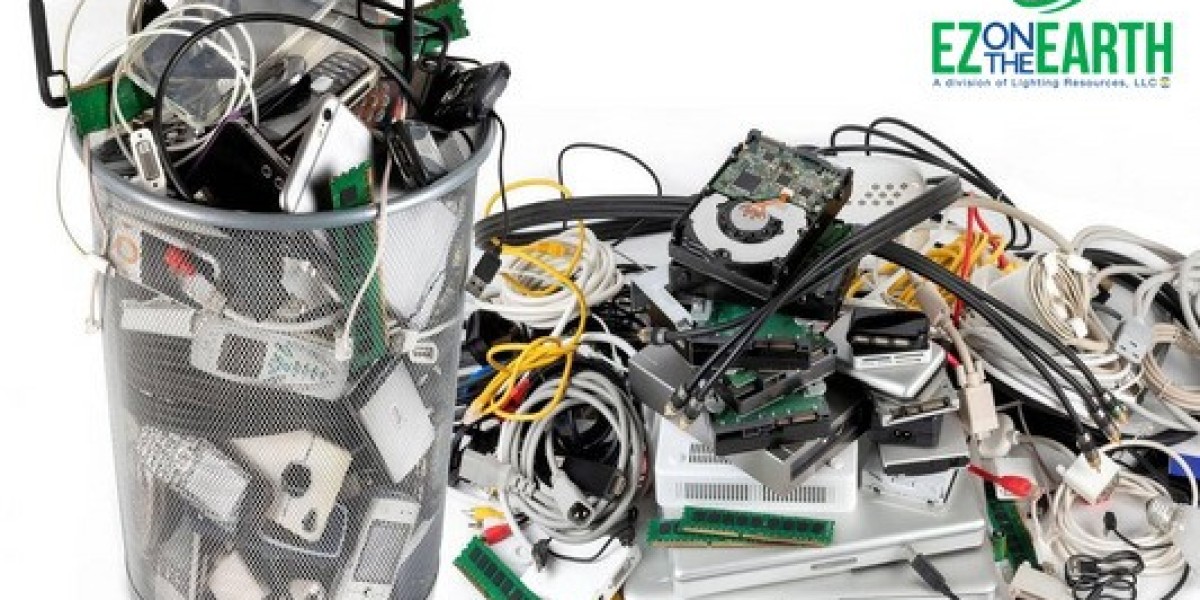Electronic waste, commonly known as e-waste, is one of the fastest-growing waste streams globally. It encompasses discarded electronic devices such as smartphones, laptops, televisions, and household appliances. With the rapid pace of technological advancement, the demand for newer, more sophisticated gadgets has resulted in a significant increase in electronic waste. Electronic Waste Recycling is critical for minimizing environmental harm, conserving valuable resources, and supporting sustainable practices.
What Is Electronic Waste?
Electronic waste includes any electronic device that has reached the end of its usable life. Common items categorized as e-waste include:
- Computers and laptops
- Mobile phones and tablets
- Televisions and monitors
- Printers and photocopiers
- Home appliances like refrigerators and microwaves
- Batteries and cables
These devices often contain hazardous substances like lead, mercury, and cadmium, which can pollute the environment if improperly disposed of. At the same time, they are rich in recyclable materials, including precious metals like gold, silver, and copper.
The Importance of E-Waste Recycling
1. Environmental Protection
Improper disposal of e-waste can lead to soil, water, and air pollution. Hazardous chemicals in electronics can leach into the soil or be released into the air during incineration. Recycling reduces the risk of environmental contamination.
2. Resource Conservation
E-waste contains valuable materials that can be reused in manufacturing. Recycling helps recover precious metals and reduces the need for mining, which is resource-intensive and environmentally damaging.
3. Energy Efficiency
Recycling materials from old electronics consumes less energy than extracting and processing raw materials. This reduces the overall carbon footprint associated with manufacturing new devices.
4. Economic Benefits
The e-waste recycling industry generates jobs in collection, transportation, dismantling, and processing. It also reduces costs for manufacturers by providing recycled materials for new products.
5. Compliance with Regulations
Many countries have implemented strict e-waste management regulations. Recycling ensures compliance with these laws and avoids penalties.
Steps in the E-Waste Recycling Process
1. Collection and Transportation
E-waste recycling begins with the collection of discarded electronics. Individuals, businesses, and organizations can drop off their e-waste at designated recycling centers or participate in community collection programs.
2. Sorting and Dismantling
Once collected, the e-waste is sorted based on the type of device and material composition. Manual dismantling involves separating components like circuit boards, batteries, and screens for further processing.
3. Shredding and Material Recovery
The dismantled components are shredded into smaller pieces, making it easier to separate materials such as metals, plastics, and glass. Advanced techniques like magnetic separation and water processing help recover valuable materials.
4. Refining
Precious metals and other raw materials are refined to remove impurities. These materials are then reused in manufacturing new electronic devices or other products.
5. Disposal of Non-Recyclable Materials
Non-recyclable components are disposed of responsibly to minimize environmental impact. This often involves safe landfill practices or incineration under controlled conditions.
Challenges in E-Waste Recycling
1. Lack of Awareness
Many individuals are unaware of the importance of e-waste recycling or do not know where to recycle their old electronics.
2. Improper Handling
Informal recycling methods, such as open burning or acid stripping, are hazardous to both the environment and workers' health.
3. Complex Product Design
Modern electronics are often designed with non-recyclable materials or components that are difficult to separate, complicating the recycling process.
4. Insufficient Infrastructure
In some regions, the lack of adequate recycling facilities and policies makes it difficult to manage e-waste effectively.
How Individuals Can Contribute to E-Waste Recycling
1. Donate or Sell
If your electronics are still functional, consider donating or selling them to extend their usable life and reduce waste.
2. Use Certified Recyclers
Dispose of your e-waste through certified recycling programs or facilities to ensure safe and environmentally friendly processing.
3. Participate in Take-Back Programs
Many manufacturers and retailers offer take-back programs, where they accept old devices for recycling. Take advantage of these initiatives to responsibly dispose of your electronics.
4. Reduce and Reuse
Adopt practices like repairing damaged devices, upgrading components, or buying refurbished electronics to minimize waste.
Global Efforts in E-Waste Management
Governments, organizations, and companies worldwide are taking steps to address the e-waste crisis. Initiatives like the Basel Convention aim to regulate the transboundary movement of hazardous waste, including e-waste. Tech companies like Apple, Samsung, and Dell have implemented recycling programs and committed to using recycled materials in their products.
Non-profit organizations also play a crucial role in raising awareness and establishing e-waste collection programs. Examples include the Global E-Waste Monitor and the Electronics TakeBack Coalition, which promote responsible recycling practices.
Conclusion
Electronic waste recycling is essential for protecting the environment, conserving resources, and building a sustainable future. As the volume of e-waste continues to grow, adopting responsible recycling practices becomes increasingly urgent. By understanding the benefits of e-waste recycling and taking proactive steps, individuals and organizations can contribute to a cleaner, greener planet while supporting a circular economy.










